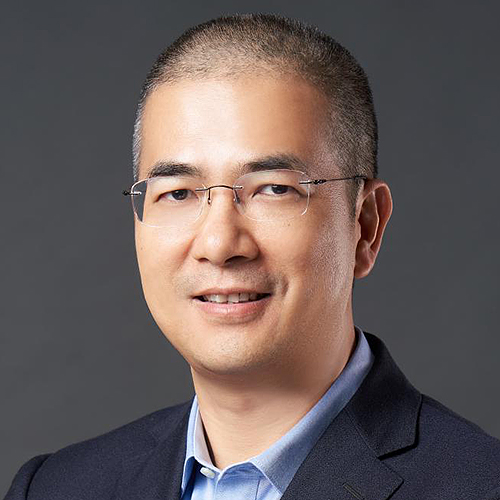The country’s economic story – if you could ignore for a moment the controversial rhetoric of President Rodrigo Duterte – is that the Build, Build, Build (BBB) public infrastructure programme will achieve one thing by 2022: bring the economy to upper middle income status.
It is achieved by sustaining an annual growth rate of 7%-8% in the medium-term and reducing the poverty incidence from 21.6% (2015) to 14%.
The Duterte administration’s “Golden Age of Infrastructure”, launched in 2017, is an infrastructure development programme to accelerate economic growth and inclusion through more spending and more foreign direct investments. It is the heart of the five-year Philippine Development Plan.
The BBB strategy will increase public infrastructure spending from a mere 2.9% of GDP to 7.3% by 2022. The government confirms that the 5.4% target for 2017 – or close to it – is achieved, a significant improvement from some 50 years of infrastructure spending that has accumulated to less than 3% of GDP, according to the budget department.
Budget chief Benjamin Diokno is frustrated that despite two decades of uninterrupted growth, the underinvestment in infrastructure has continued, resulting in “poor and crumbling” public infrastructure and the reason why Filipinos are suffering from traffic congestion and an unreliable public transport system.
“It hampers economic productivity, trade mobility, and delivery of public services,” Diokno says. “Inclusivity, in the midst of strong, persistent growth, remains elusive. And the sorry state of public infrastructure is one of the major reasons for that.”
Diokno: With hybrid PPP, we expect the cost of financing to be lower
Infrastructure spending over the medium term (2017-2022) is estimated between US$148.87 billion to US$167.48 billion. Diokno says this is an understated amount, considering that power, water and telecommunications investments are primarily in the hands of the private sector.
Including priority and minor projects – about 5,636 in total – public investment is estimated to reach US$186 billion by the end of President Duterte’s term. About 72.7% of these funds are for infrastructure. The projects are mostly transportation-related (about 64%), and the rest are allocated for water, energy, social and public infrastructure, and information and communications technology.
Sources of funding for these projects include: US$89.33 billion via government procurement; US$18.60 billion from official development assistance (ODA); and US$24.19 billion from hybrid public-private partnerships (PPP). Financing options also include the General Appropriations Act (GAA) and from unsolicited proposals.
The National Economic Development Authority (NEDA) has approved 29 infrastructure projects worth US$22.33 billion during President Duterte’s first year in office, and of this number, 20 are transportation projects and ODA-funded at an outlay of some US$20.47 billion.
Based on Department of Budget and Management (DBM) data, in nominal terms, infrastructure disbursements will amount to US$16.17 billion this year, moving up to US$33.44 billion in 2022. In 2019, the two major infrastructure agencies, the Department of Public Works and Highway (DPWH) and Department of Transportation (DOTr) are allocated US$10.34 billion and US$1.41 billion, respectively.
BBB flagship projects
There are 75 flagship projects under the BBB which the NEDA disclosed in 2017. Around 45 projects are located in Luzon, 17 are in the Mindanao area and 10 are in the Visayas region.
These high-impact projects comprise 31 roads and bridges; 12 rail and urban transport projects; six for air transport; four water transport projects; four flood management projects; 11 for water supply and irrigation; four power projects and three other public infrastructure projects.
Around 48 of the flagship projects will be financed by ODA, 12 via the GAA, seven through loans provided by the Asian Development Bank, six via hybrid PPP, one through the World Bank, and another one from a private loan, according to Diokno.
As of end-July, NEDA has approved 35 flagship projects for BBB. Depending on which department is announcing, only six to 10 have started implementation this year and one is almost completed.
In an update, DOTr secretary Arthur Tugade says 92% of New Bohol International Airport is completed and right on schedule to open in October this year. The US$148.87 million eco-airport in Panglao Island has a capacity of two million passengers per year.
The first phase of the Mindanao Rail Project – the very first railway in Mindanao – which NEDA earlier said would start this year had moved the implementation date to the first quarter of 2019, Tugade confirms.
The Metro Manila Subway Project, in the meantime, is still set for groundbreaking this year, albeit in the last quarter. “Partial operation is targeted by 2022 which entails the opening of a training center, a depot and three train stations,” Tugade says.
The MRT-LRT Common Station Project is undergoing construction right now and will connect four major rail lines in Metro Manila. The Philippine National Railway (PNR) North 2 Malolos-Clark Airport-Clark Green City Rail pre-construction started last January. Actual construction is in the fourth quarter this year. PNR South Long-haul Manila-Bicol Railway is set to begin in the second quarter of 2019.
The NEDA also announced that 12 bridges in Metro Manila including those in Pasig River, Marikina River, and Manggahan Floodway will break ground this year and, according to DPWH secretary Mark Villar, the department remains on track as far as these projects are concerned.
Villar says the 12 projects spanning almost 10,000 metres are undergoing construction. “This is the Metro Manila logistics improvement programme,” he adds.
However, some projects are behind schedule. For instance, the inter-island linkages or the mega bridges including the Panquil Bay project that will connect Mindanao, Visayas and Luzon are delayed. NEDA had previously announced these projects would be implemented this year.
Socioeconomic planning secretary Ernesto Pernia says the rest of the flagship projects are in different stages of due diligence either by the DPWH or the DOTr. After this process, pre-investment studies must commence such as feasibility studies before NEDA can process the proposed projects for board approval.
Pernia defends what some government critics have said are the slowpoke project roll-out timescales or implementation periods. He stresses that when a project is said to be underway, it means that financing, procurement and design are being decided and planned on. This takes time, he says.
It is also a question of what means the government prefers in terms of funding, and it is the hybrid PPP. This way, they control selection, financing, bidding and construction thought quicker and less expensive.
Take by way of example the US$104.21 million Clark International Airport project, the government’s biggest hybrid PPP so far, a flagship project that can meet its 2020 opening target date. Diokno says this is a good example of a hybrid PPP and its on-time completion is critical. It is, after all, the only viable alternative to the congested Ninoy Aquino International Airport in Manila. The bidding for its operation is ongoing.
Pernia: Infrastructure projects take time to build
“With hybrid PPP, we expect the cost of financing to be lower, say in the neighbourhood of 2%, and longer-term, say 30 to 40 years,” Diokno says. “This implies that the user charge for the facility would be relatively more affordable under the hybrid PPP than the traditional PPP.”
“By the way, there is one financing option that we do not favour,” he adds. “That is a situation where the proponent who can give the government the highest premium for a project or facility, gets the contract. That is an option that will surely be more burdensome to the users or beneficiaries of the project.”
More ODA
Since the Duterte government has now been in office over two years, Finance secretary Carlos Dominguez III says they are racing against time and working as fast as they can on the BBB financing schemes. As such, most of the first projects will benefit from the lower cost of ODA financing and shorter timeframe of completion.
The top two sources of ODA are Japan and China, both promising US$9 billion each of concessional loans. Meanwhile South Korea has committed US$1 billion.
The Philippine growth strategy depends on two factors: the comprehensive tax reform programme and the BBB modernization. Dominguez knows they are working against the clock. “If we do not modernize our infrastructure today and if we do not modernize our tax policy this year, we cannot possibly sustain our pace of growth,” he says.
Dominguez says that to sustain growth momentum and long-term fiscal sustainability, they have to be dynamic but “prudent (and) supportive of the government’s development objectives”. More importantly, to get things done before 2022.
His department expects expenditures to increase 20.7% by 2022 while the fiscal deficit target has also been upgraded to 3.2% of GDP next year in favour of higher public infrastructure and capital development spending. The planned deficit is expected to hover between 2% and 3% of GDP by 2022.





.jpg)
.jpg)


